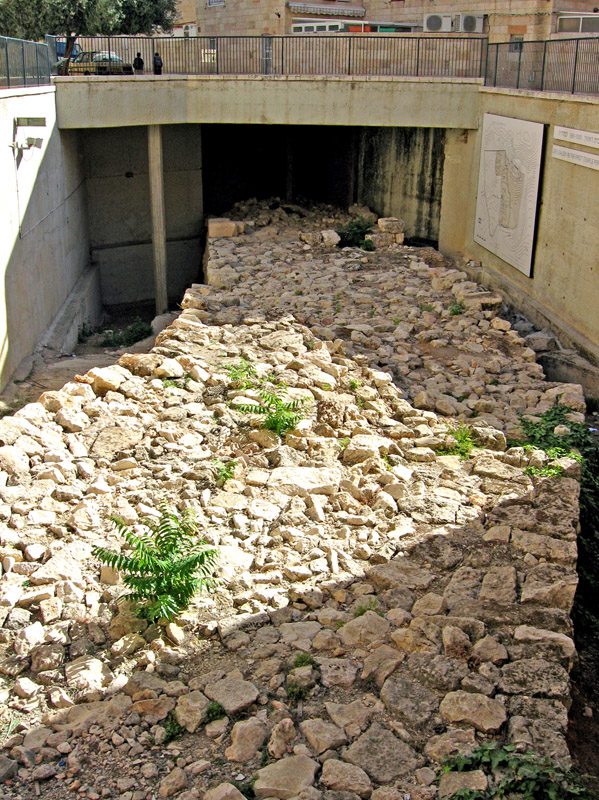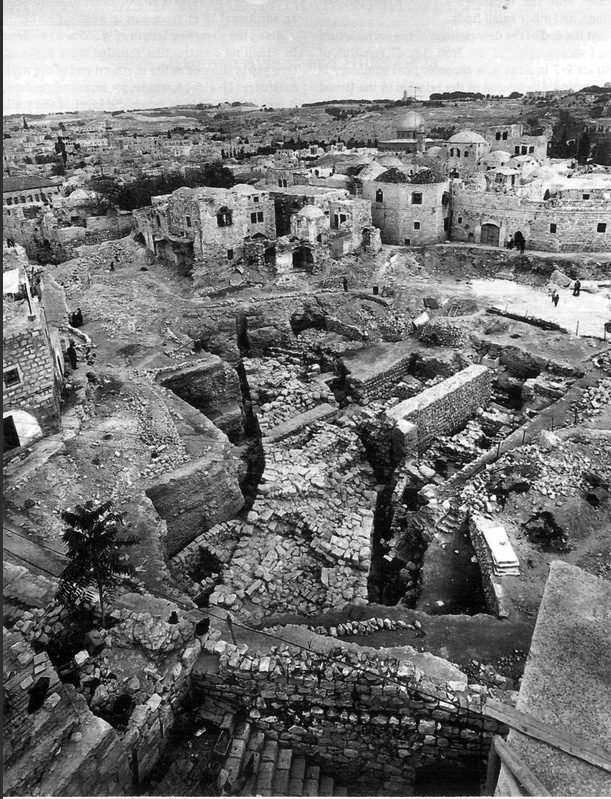The Broad Wall, also referred to as the ‘Israelite Wall,’ the ‘Hezekiah Wall,’ and the ‘Avigad Wall,’ constitutes a segment of a formidable fortification uncovered during excavations of Jerusalem’s Old City following the Six-Day War, situated along the northern border of the Jewish Quarter. It is commonly associated with one of the walls erected by King Hezekiah of Judah as part of his extensive fortification efforts in Jerusalem in anticipation of Assyrian aggression (2 Chronicles 32:5).
Presently, visitors have the opportunity to explore the site of the Broad Wall, located at 87 Ha’Yehudeim St., Jerusalem, in close proximity to the Hurva Synagogue.


Research History
Unearthed during excavations spanning 1969-1978 in Jerusalem’s Old City, the Broad Wall was brought to light under the direction of Nachman Avigad, on behalf of the Antiquities Authority and the Company for the Reconstruction and Development of the Jewish Quarter. The initial portion of the wall was uncovered in an excavation area overseen by Hillel Geva, Amihai Mazar, and Roni Reich between 1969 and 1970.
Construction of the Wall
Dating back to the late 8th century BC, the wall stands at the northern terminus of Jerusalem’s western hill. It replaced an unfortified Judean settlement from the same period, with some structures demolished to accommodate its construction. Crafted from massive ashlar stones, the wall originally measured 7 meters wide and approximately 8 meters tall (now surviving to a height of 3 meters). Some stones may have been repurposed from demolished houses. This wall likely connected to a substantial tower, a portion of which was also unearthed, presumably linked to the western section of the wall. Ceramics dating to the 7th and 8th centuries BC were discovered in the wall’s vicinity and fill. Additionally, excavations revealed a narrower wall distinct from the broader structure, supporting the notion that the broad wall was erected in anticipation of Hezekiah’s rebellion against the Assyrians. Nearby, remnants of earlier fortifications were found, likely belonging to a preceding fortification system possibly from the early 8th century BC.
The Wall After Sennacherib’s Campaign
Following the partial failure of Sennacherib’s campaign, Jerusalem endured and began expanding westward along the trajectory of the Great Wall at a relatively rapid pace. The decommissioning and burial of the broad wall’s remnants remain undocumented. Some scholars suggest it corresponds to the “broad wall” mentioned in the Book of Nehemiah (3:8; 12:38). During the Second Temple period, the wall was still visible and known as the “old wall,” as referenced by Josephus (The Wars of the Jews 5, 4, 2).
Sources:
Avigad, N. The Upper City of Jerusalem: The Archaeological Excavation in the Jewish Quarter of the Old City, Jerusalem. 1980 (Hebrew)
Barkai, G., The Forgotten Wall in First Temple Jerusalem. In: Faust, A and Baruch A. (eds), New Studies on Jerusalem 7, Ramat Gan, 2001, pp. 39-44 (Hebrew)
M. Broshi, ‘The Expansion of Jerusalem in the Reigns of Hezekiah and Manasseh’, IEJ 24 (1974), pp. 21-26.


